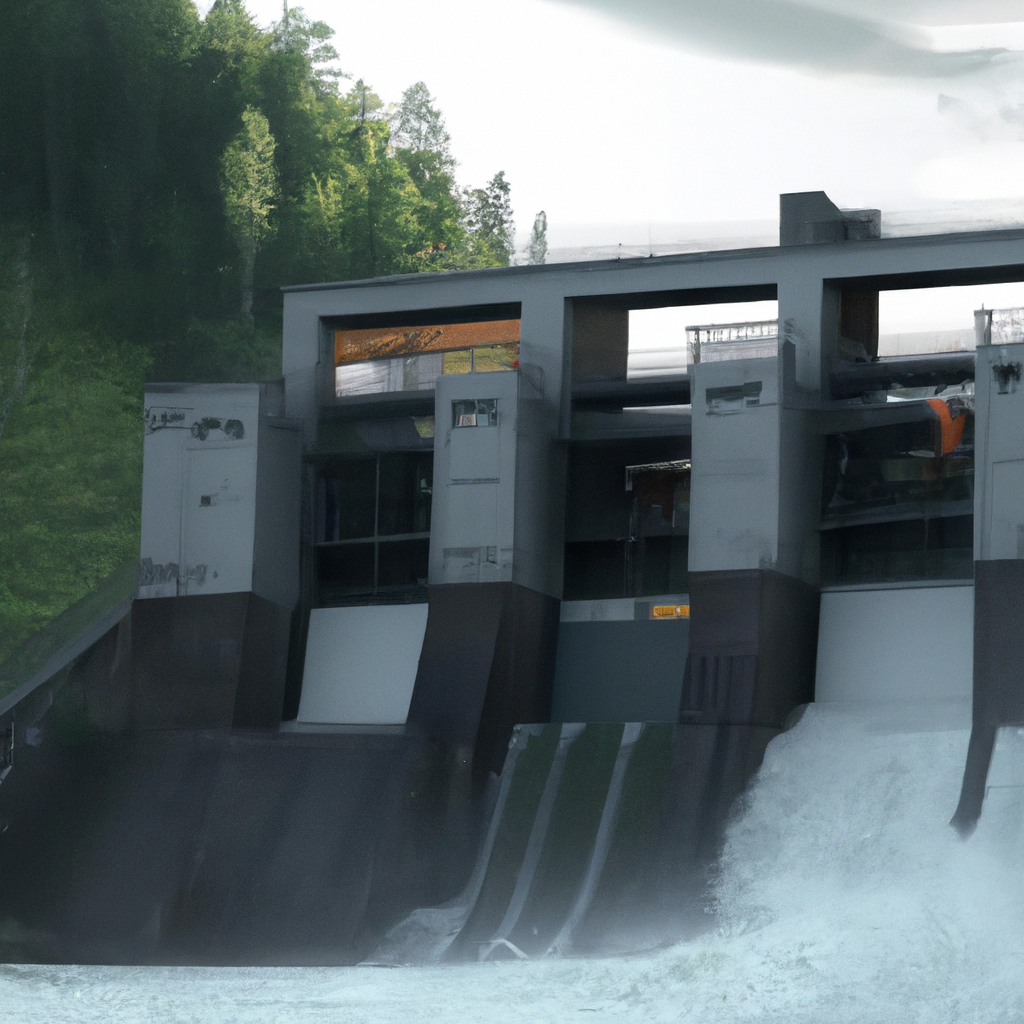Hydroelectric power is a renewable energy source that is generated from the force of falling or flowing water. This power is harnessed through hydroelectricity, which is produced in hydro power plants. The plants use hydroelectric dams to control the flow of water, which in turn drives turbines that generate electricity. This article will explore how hydroelectric power works in detail, covering the various components that make up a hydro power plant and the process of generating electricity from water.
The Hydroelectric Dam
The hydroelectric dam is the first component of a hydro power plant. It is built across a river or other flowing water source to create a reservoir of water. This reservoir is used to control the flow of water, which is necessary for generating electricity. When water is released from the reservoir, it flows through a series of pipes and channels to the turbines.
The Turbines
The turbines are the second component of a hydro power plant. They are usually located at the bottom of a dam, where the water flows down a channel and through a series of blades on the turbine. As the water flows through the blades, it causes the turbine to spin. The spinning turbine then drives a generator that produces electricity. The amount of electricity produced depends on the flow of water and the size of the turbine.
The Generator
The generator is the third component of a hydro power plant. It is connected to the turbine and converts the mechanical energy of the spinning turbine into electrical energy. The generator is made up of coils of wire and magnets. As the turbine spins, it creates a magnetic field that induces a current in the wire coils. This current is then converted into electrical energy, which is sent to the power grid for distribution.
The Transmission Lines
The transmission lines are the final component of a hydro power plant. They are used to carry the electricity from the power plant to the consumer. The electricity is transmitted at high voltages to reduce energy loss during transmission. The transmission lines are connected to transformers, which convert the high voltage electricity into the lower voltage electricity used in homes and businesses.
Advantages of Hydroelectric Power
Hydroelectric power is a renewable energy source that has several advantages over other forms of energy. These advantages include:
– It is clean and does not produce greenhouse gases or other pollutants.
– It is reliable and can be used to generate electricity 24/7.
– It is cost-effective and has a low cost of production compared to other forms of energy.
– It is flexible and can be used to meet peak demand for electricity.
Disadvantages of Hydroelectric Power
Despite its advantages, hydroelectric power also has some disadvantages. These include:
– It can have a negative impact on the environment, particularly on fish populations and river ecosystems.
– It requires the construction of large dams, which can be expensive and can displace local communities.
– It is dependent on water availability, which can be affected by droughts or changes in precipitation patterns.
Conclusion
In summary, hydroelectric power is an important source of renewable energy that generates electricity from the force of falling or flowing water. It is produced in hydro power plants, which use hydroelectric dams, turbines, generators, and transmission lines to generate and distribute electricity. While hydroelectric power has several advantages, it also has some disadvantages that need to be considered. Overall, hydroelectric power is a valuable and sustainable source of energy that can help us meet our energy needs while reducing our impact on the environment.







